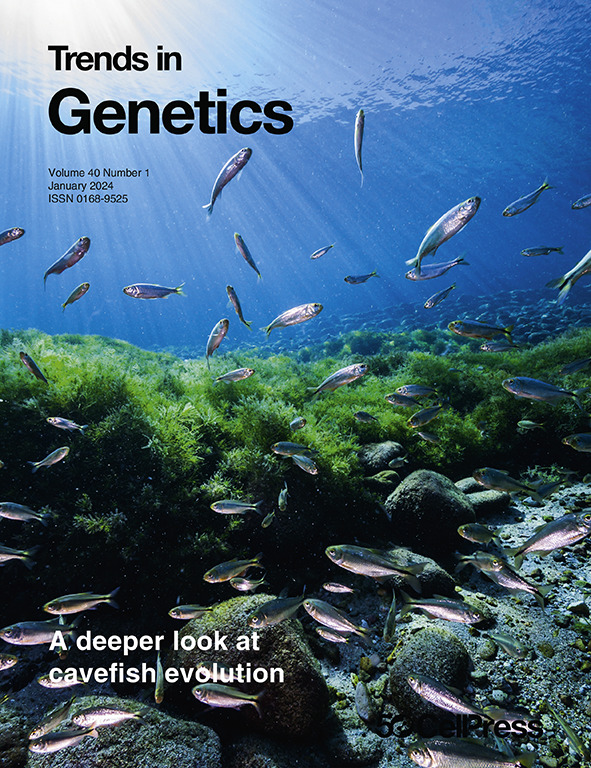人类基因组中LINE-1调控和功能的研究进展。
IF 13.6
2区 生物学
Q1 GENETICS & HEREDITY
引用次数: 0
摘要
逆转录转座子LINE-1(长分散核元件1,L1)占人类DNA的约17%(约50万基因组L1拷贝),在不同细胞系中表现出上下文依赖性表达。最近的研究表明,L1受到多种因素的多层控制,这些因素或相互协作或相互竞争以确保L1的精确活动。值得注意的是,L1s已被用作各种转录依赖的调控元件,如启动子、增强子和拓扑相关结构域(TAD)边界,它们调节合子基因组激活、衰老、癌症和其他疾病中的基因表达。本文综述了L1的调控及其影响疾病和发展的调控功能。本文章由计算机程序翻译,如有差异,请以英文原文为准。
Advances in understanding LINE-1 regulation and function in the human genome.
LINE-1 (long interspersed nuclear element 1, L1) retrotransposons constitute ~17% of human DNA (~0.5 million genomic L1 copies) and exhibit context-dependent expression in different cell lines. Recent studies reveal that L1 is under multilayered control by diverse factors that either collaborate or compete with each other to ensure precise L1 activity. Remarkably, L1s have been co-opted as various transcription-dependent regulatory elements, such as promoters, enhancers, and topologically associating domain (TAD) boundaries, that regulate gene expression in zygotic genome activation, aging, cancer, and other disorders. This review highlights the regulation of L1 and its regulatory functions that influence disease and development.
求助全文
通过发布文献求助,成功后即可免费获取论文全文。
去求助
来源期刊

Trends in Genetics
生物-遗传学
CiteScore
20.90
自引率
0.90%
发文量
160
审稿时长
6-12 weeks
期刊介绍:
Launched in 1985, Trends in Genetics swiftly established itself as a "must-read" for geneticists, offering concise, accessible articles covering a spectrum of topics from developmental biology to evolution. This reputation endures, making TiG a cherished resource in the genetic research community. While evolving with the field, the journal now embraces new areas like genomics, epigenetics, and computational genetics, alongside its continued coverage of traditional subjects such as transcriptional regulation, population genetics, and chromosome biology.
Despite expanding its scope, the core objective of TiG remains steadfast: to furnish researchers and students with high-quality, innovative reviews, commentaries, and discussions, fostering an appreciation for advances in genetic research. Each issue of TiG presents lively and up-to-date Reviews and Opinions, alongside shorter articles like Science & Society and Spotlight pieces. Invited from leading researchers, Reviews objectively chronicle recent developments, Opinions provide a forum for debate and hypothesis, and shorter articles explore the intersection of genetics with science and policy, as well as emerging ideas in the field. All articles undergo rigorous peer-review.
 求助内容:
求助内容: 应助结果提醒方式:
应助结果提醒方式:


